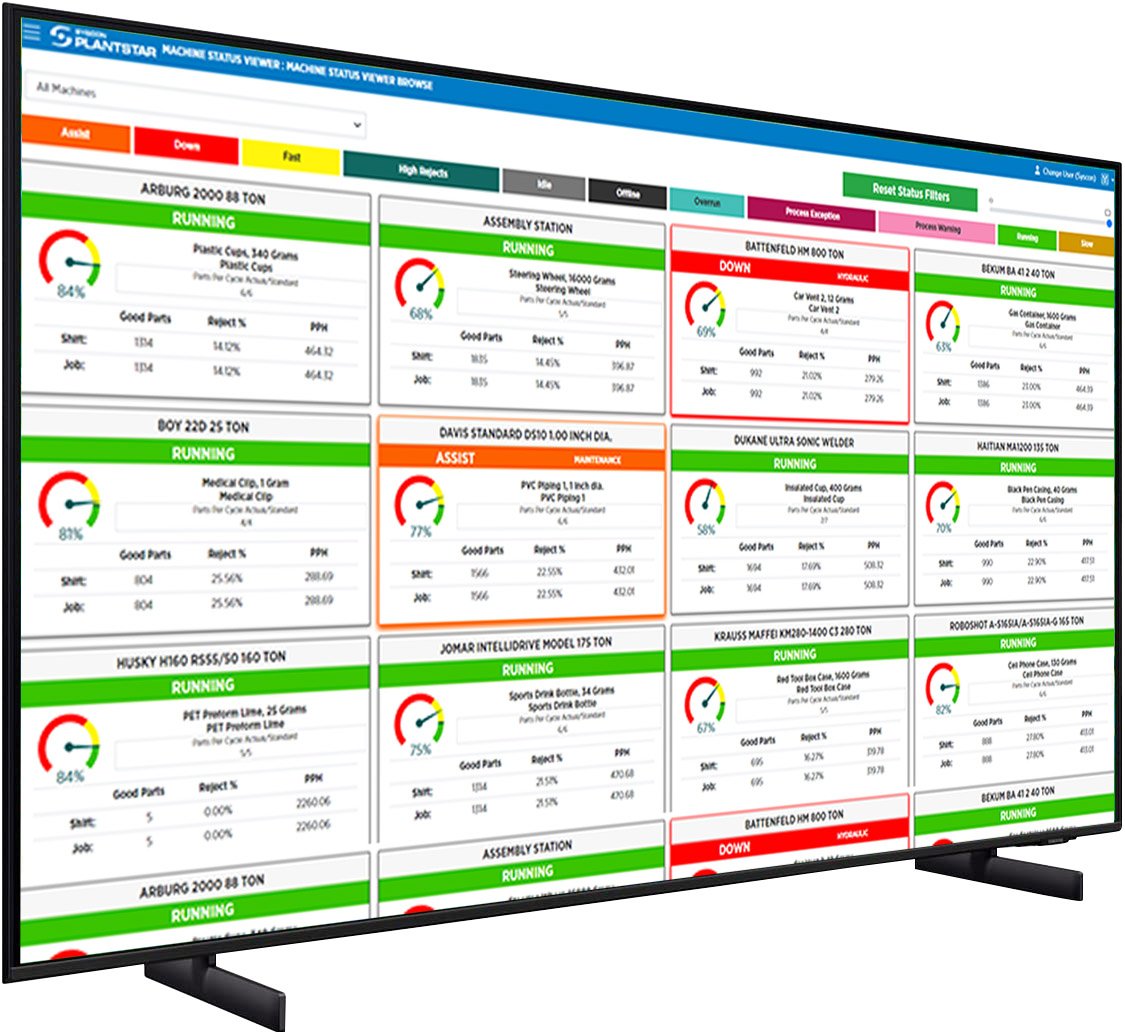PlantStar BLOG
How Medical Device Manufacturers Can Leverage an MES
Oct 27, 2022 4:45:00 PM / by PlantStar Team
 Current events have put the medical device industry under siege. The pandemic quickly created dramatic and unprecedented changes in demand. Supply chain constraints arose as social distancing rules were put in place, and staffing shortages further gummed up the works. Recently, inflation added even more pressure to suppliers’ financial performance. A manufacturing execution system (MES) enables manufacturers to gain needed visibility, streamline business processes, increase efficiency, reduce costs, improve revenue, and ultimately strengthen their business.
Current events have put the medical device industry under siege. The pandemic quickly created dramatic and unprecedented changes in demand. Supply chain constraints arose as social distancing rules were put in place, and staffing shortages further gummed up the works. Recently, inflation added even more pressure to suppliers’ financial performance. A manufacturing execution system (MES) enables manufacturers to gain needed visibility, streamline business processes, increase efficiency, reduce costs, improve revenue, and ultimately strengthen their business.
An MES like PlantStar's connects shop floor equipment outfitted with intelligent sensors to manufacturing networks. The sensors and associated software perform tasks like tracking material moving down the production line and equipment efficiency. Nowadays, however, it’s more than a performance monitoring tool; it is a business enabler. An MES solution also tracks labor needs and automates personnel scheduling. In addition, the application connects to other information systems, like enterprise resource planning (ERP), supply chain management, workforce management solutions (WMS), and customer relationship management (CRM) applications, so corporations track materials, products, work orders, and personnel through the supply chain and manufacturing processes. With that information, medical device companies reap many benefits.
Gain Visibility
An MES system provides clarity and insight throughout manufacturing organizations. Such capabilities became vital when drastic changes in supply and demand occurred. As demand increased during the pandemic, pressure increased on companies that had been using just-in-time business models for material sourcing. Many struggled to meet short lead time demands and accommodate momentous disruptions, unexpected delays, and staffing problems.
Adjust More Easily
When specific materials, parts, or assemblies are used in higher or lower than usual volumes, an MES captures the work order information and sends it to relevant stakeholders in real time. The software also quickly and conclusively outlines potential courses of action, such as transferring inventory from another point, ordering from other vendors, and speeding up replenishment plans.
Improve Quality
The ideal production run yields 100% products, but companies fall short of that goal, sometimes by a little and other times by a lot. One challenge is manufacturing’s dynamic nature. The various components involved function at different levels of efficiency. For example, a robot starts to show wear and tear and produces more defective parts as it ages. Historically, suppliers have been slow to recognize such problems, so the problems dragged on. An MES stores machine overall equipment efficiency (OEE) data. With it, the degradation is seen earlier, adjustments made sooner, and the number of defects reduced.
Automate Workflow
The manufacturing industry has been a large, long-standing industry—one where employees relied on legacy tools, such as paper, spreadsheets, and even sticky notes, to track workflow. Collecting that information has been challenging because it requires manual input, and the process can be error-prone.
An MES enables medical device companies to replace legacy processes with modern digital alternatives. As a result, suppliers create a paperless manufacturing environment across batch and discrete operations and streamline their operations. They take advantage of features like automated validation, forms with electronic signatures, and automatic notifications to process work orders more quickly.
Simplify Troubleshooting
Manufacturing machines operate almost continuously during their scheduled run times. IoT sensors now collect information about how well they are functioning. They track and measure process variables like pressures, temperatures, time, and power levels. If a conveyor belt slows down or stops functioning, staff can examine the variables and determine which was the reason for the snafu (increased pressure, for example) and make the appropriate adjustment.
Ensure Compliance
Designing a medical device is a complex task with no margin of error. Risk management and traceability play important roles in each stage of product development. In response, various government and industry groups created a wide and growing variety of regulations governing how medical equipment is produced. Organizations like the US Food and Drug Administration (FDA) and International Standards Organization (ISO) have been charged with putting checks in place to ensure medical equipment is safe for patients.
Suppliers must understand which regulatory guidelines their equipment is subject to. They then must create robust manufacturing processes to ensure product quality, create and consolidate performance data, and document the safety steps taken. An MES helps manufacturers generate, collect, and consolidate the data illustrating how their work flowed, Quality management systems compliance, and product history. An MES then makes it available to reporting tools like FDA audits.
Speed Up Manufacturing Processes
Suppliers rely on computer systems to track the production of goods. Providing real-time information to employees during the process results in faster and better decision making. The visibility translates into improved cycle times due to increased efficiency. There are fewer makeups because enterprises produce fewer scrapped products and instead get it right the first time. Final product reviews become quicker because there are fewer aberrations. Ultimately, the business releases products to customers faster.

Schedule A Demo
Subscribe to Email Updates
Posts by Topic
- Manufacturing Execution Systems (38)
- manufacturing solutions (16)
- MES 101 (13)
- Industry 4.0 (11)
- improve efficiency (10)
- Plastic Molding (9)
- Plastics Technology (9)
- mes software (9)
- mes solutions (9)
- MES hardware (8)
- Shop Floor Production (8)
- digital transformation (7)
- Reduce scrap (6)
- data-driven-decisions (6)
- Medical molding (5)
- lean manufacturing (5)
- process monitoring (5)
- product quality (5)
- lights-out manufacturing (4)
- manufacturing dashboard (4)
- production monitoring (4)
- ERP integration (3)
- Shop Floor Safety (3)
- supply chain management (3)
- Injection Molding Technology (2)
- defect collection (2)
- machine mes (2)
- process variables (2)
- digital strategy (1)
- labor gap (1)
- throughput (1)


